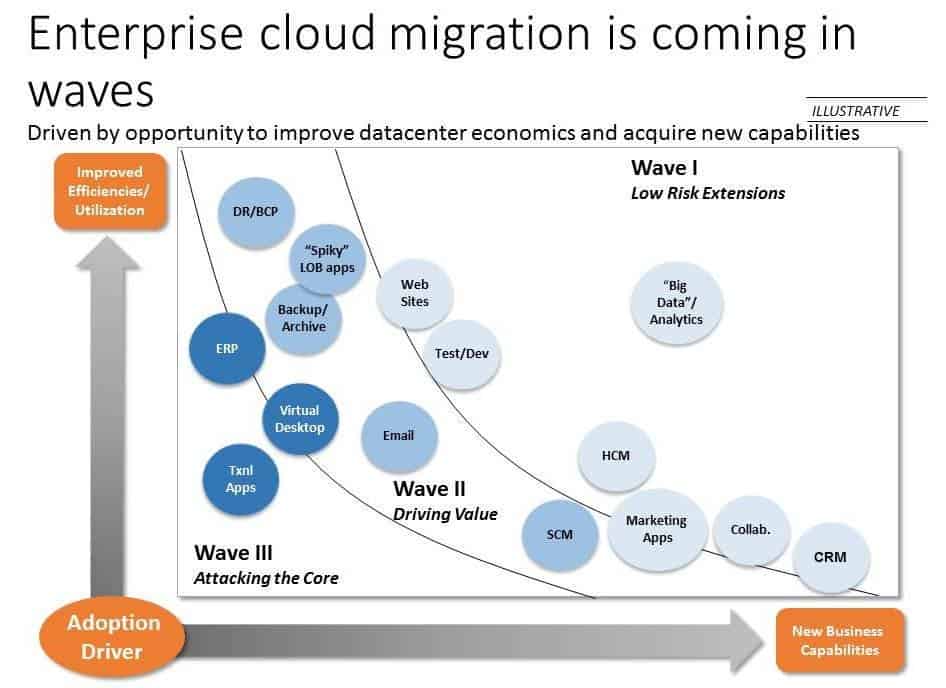
The cloud revolution is breaking down walls surrounding existing outsourcing arrangements. In fact, the business case for some outsourced workloads crumbles in light of opportunities in the cloud. In a traditional data center or IT outsourced infrastructure model, you pay for the capacity 24/7; but in a cloud environment, you pay only for what you use.
By moving workloads to a cloud environment, we estimate that an organization would end up paying approximately 25-50 percent of the cost for the current 24/7 model.
Those economics are stunning.
Our analysis suggests that about 50 percent of current outsourced workloads have the capability to move to the cloud easily. That doesn’t mean that they will be moved. But they are intermittent workloads, so they can be turned off and on and thus easily moved to a variable pricing model such as the cloud. They also don’t have the same security and compliance cloud constraints as production workloads.
That doesn’t mean they will be moved. It just means they have the capability to be moved without significant disruption or a large investment to replatform them.
The diagram below shows the workloads that we think will migrate to the cloud.

We believe the first to head for the cloud environment will be the application development and testing environments as this work is intermittent and ideal for the pay-per-use model. Considering that application development and testing comprise 20-25 percent of most outsourced IT infrastructure workloads, we believe the compelling underlying economics of the cloud model will drive these workloads out of their current environments quite quickly.
An enterprise with an IT infrastructure outsourcing contract very likely will want to migrate some workloads out of that environment into a next-generation model such as the cloud. It just makes sense to capture the savings. And in most outsourcing contracts, the customer has the freedom to reduce the outsourced workload by 30 percent before incurring penalties.
We see this as a big opportunity.
It’s also a potential threat.




